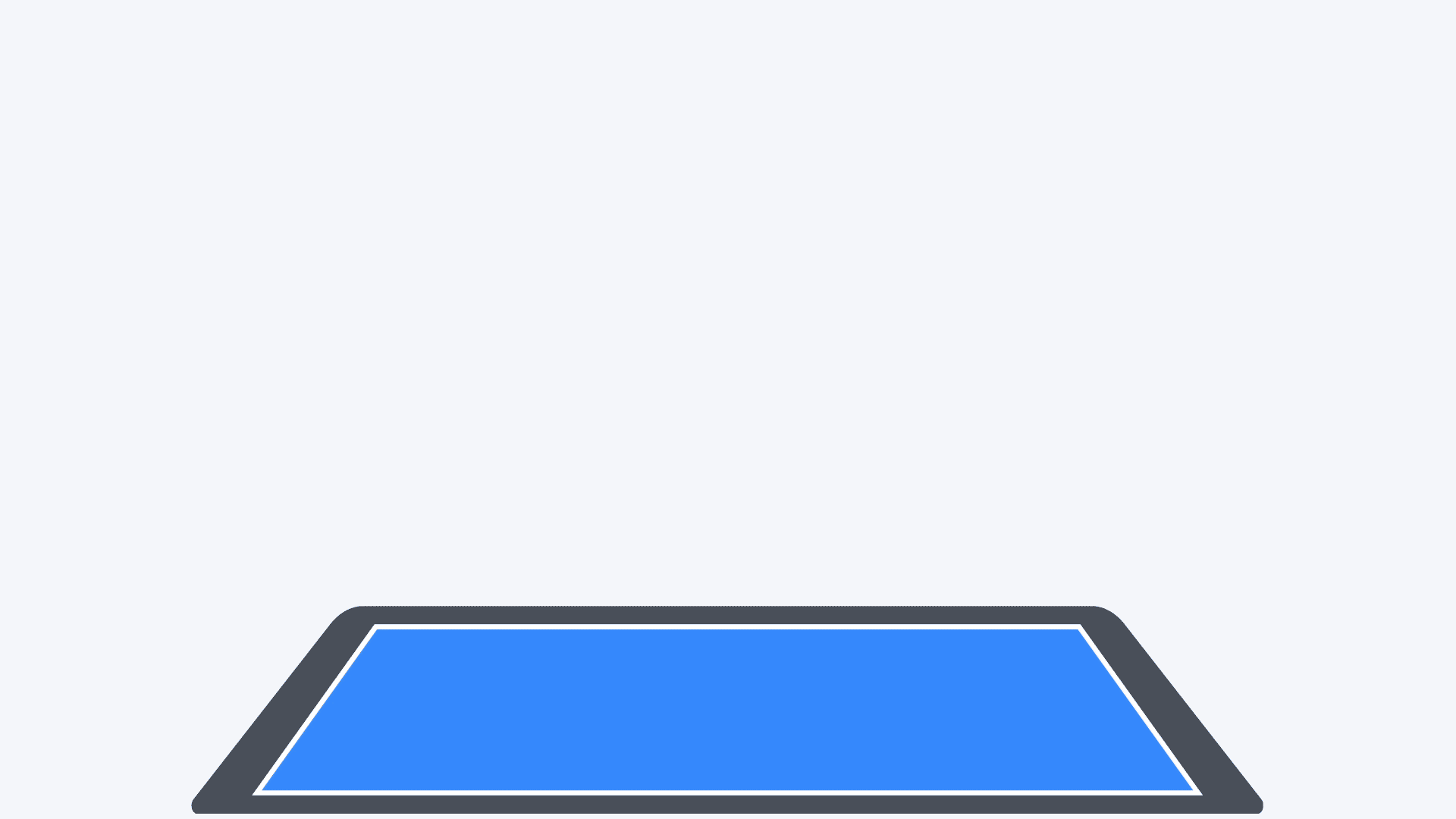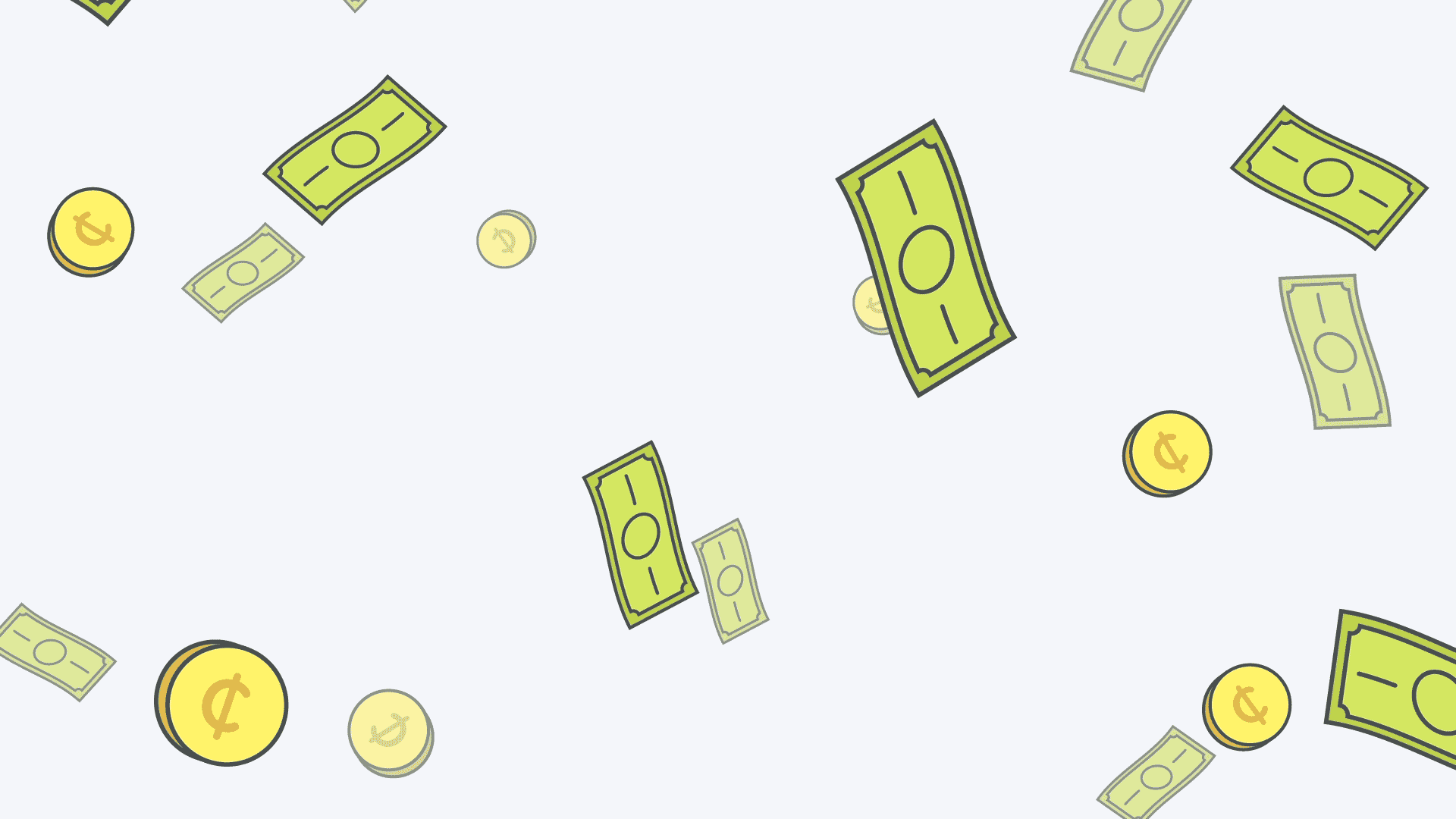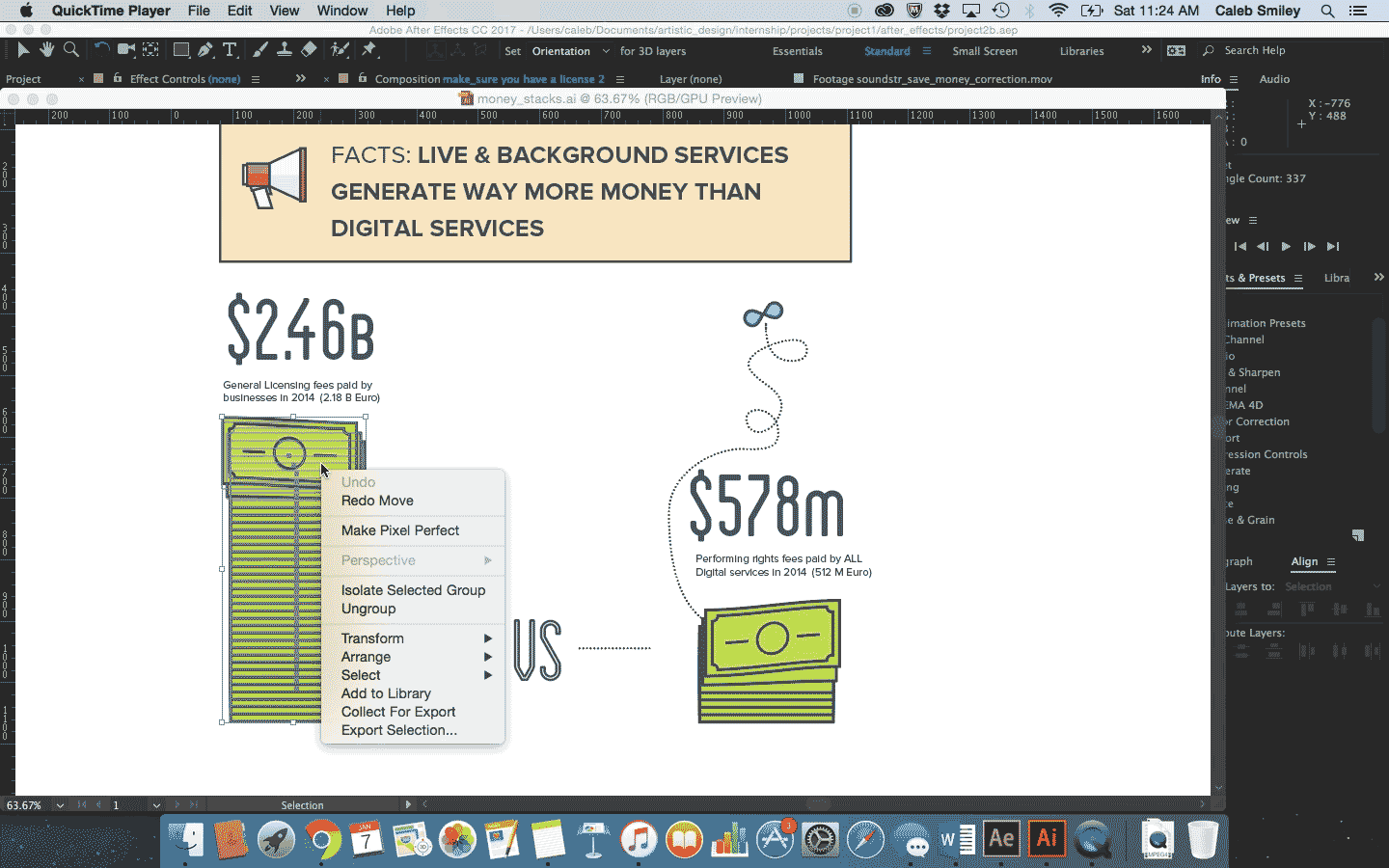This honors experience was a Semester-long internship at a music recognition technology company called Soundstr. It lasted from August to December of 2016, during which I planned and designed video graphics and animations to advertise and explain Soundstr’s mission to customers.
A big problem currently in the music industry revolves around music royalties. The way performing rights fees currently work, many businesses pay for music they never use, and much of those fees go to the wrong songwriters.
Soundstr’s product, the pulse, identifies music played in businesses and the songwriters associated with each song. This lets businesses pay only for the music they use and helps the correct songwriters receive the royalties they deserve.






This new technology creates a lot of disruption in the current industry and brings to light many problems and inefficiencies that are present today. My job was to create video content to get this message out efficiently.
This company mission led to one of the two major lessons I learned from this internship; video can be used effectively to achieve a major goal when that goal is applied to every decision during the creation of the video.
While in meetings outlining videos and editing scripts, I learned just how important every word is in a two-minute video, and how a small change can affect the overall meaning. For example, when designing this clip, there initially was a police car to show that not paying performing rights fees could result in bad consequences for businesses:






But on a draft review, it was decided that performing rights organizations shouldn’t be associated with a police car, because we didn’t want to accuse performing rights organizations as being the problem, but rather the current system in the music industry, we edited the clip to have a more positive feel:



The other big lesson during this internship dealt with the video design process. First off, I learned a wide variety of new skills that were necessary for me to do my job. For one, I had never performed character rigging (structuring graphic elements so a character will move naturally). For my internship, I ended up having to quickly learn how to rig a character and animate in two days because of a sudden change and a video deadline that was fast approaching.
I also grew a great deal more comfortable working in adobe illustrator. I already knew the basics, but had never done much professional designing in it. During my internship, most of the elements I was animating were already designed in various infographics. While I had to only isolate and do minor edits to these objects in illustrator, working with pre-made professional designs showed me what logic a graphic designer goes through when making what shape, making me much more comfortable with the program.









While learning these technical skills were very helpful, the even better lesson I had was actually experiencing and developing a fast-paced design process. Being the only person animating these videos, I had to figure out how I would organize my footage, my edits, my exports. I had never done this in a fast paced, professional environment, so it was the first time I was forced to do it. And I learned very much about how I work best.






I also developed a process with my boss on how to communicate the current state of the video and get feedback for edits. This had to be fast as each video went through on average 15 drafts. And now that I have learned how to create and adapt these processes, I feel much more comfortable tackling bigger projects in more professional settings.
As I come out of this experience, I have much more knowledge on how video marketing works, especially for a startup company. This, along with the new skills that I have learned, makes me feel much more prepared. As of now, I am planning on continuing as an intern this coming semester and am excited to expand and deepen my skill level so I can apply them to my future video productions.
Here is one of the videos I completed over the course of the Internship. Enjoy!
